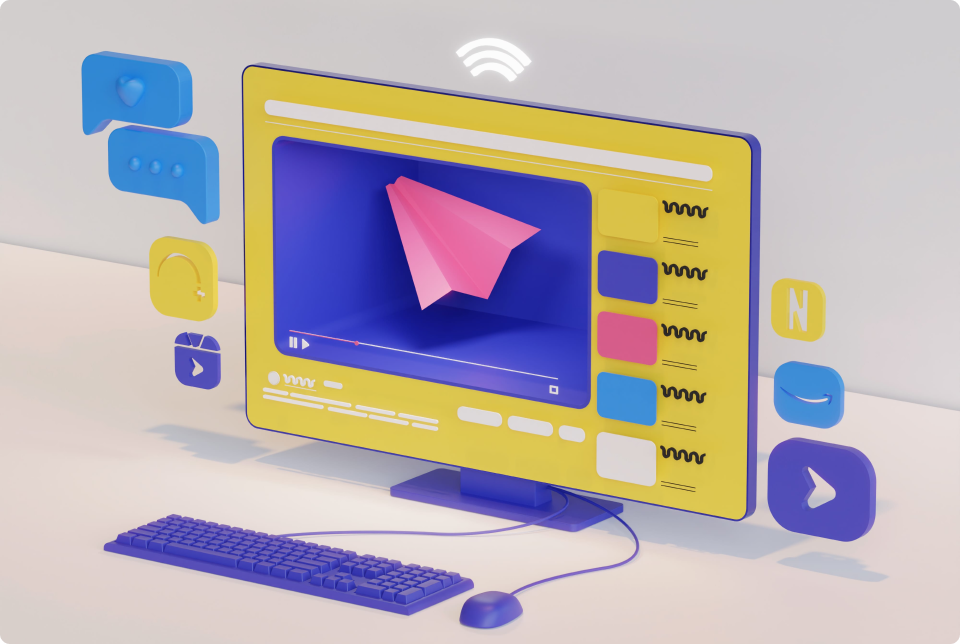
Ognyan Andonov
20 Mar
4 mins read
- Copy link
The Beginner's Guide to Video Editing: Mastering the Basics

Embarking on the journey of video editing can be both exciting and overwhelming. Whether you aim to tell a story, share an experience, or simply create content for social media, knowing the foundational principles of video editing is crucial. This guide is tailored for beginners, aiming to demystify the basics of video editing, understanding timelines, and executing simple cuts.
What is Video Editing?
Video editing is the process of manipulating and rearranging video shots to create a new work. It involves the selection and combination of shots, adding effects, and connecting them with transitions to tell a story or convey a message.
Setting Up Your Workspace
Before diving into the actual editing, it’s important to choose the right software. For beginners, programs like iMovie for Mac users, and simpler, free versions like Shotcut or DaVinci Resolve for all platforms, are a good starting point. They offer intuitive interfaces and all the essential tools you'll need.
Once you’ve selected your software, familiarize yourself with its workspace. Typically, you’ll find a preview window, a timeline, a media bin for your files, and a tool panel. Take some time to click around and see what each part of the interface does.
Understanding Timelines
The timeline is where the magic happens. It's a sequential representation of your video, where you can layer multiple clips and audio tracks. Most timelines work left to right, with the left side representing the start of your video. Here’s how to understand it:
Tracks
: Horizontal spaces where you place your video clips, audio files, and titles.
Playhead
: A vertical line that shows where you are in the timeline. It moves as the video plays.
Clips
: These are the individual pieces of video or audio that you arrange on the timeline.
Importing and Organizing Media
The first step in editing is to import your raw footage into the media bin. Once imported, organize your clips by naming them and, if necessary, tagging them with colors or keywords. Good organization upfront saves a ton of time during the editing process.
Making Your First Cut
Cuts are the most basic form of transition and signify a change from one scene to another. To make a cut:
Selecting Clips
: Drag and drop your chosen clip onto the timeline.
Finding the Cut Point
: Play through your clip to find the point where you want to make the cut.
Splitting the Clip
: Use the 'split' or 'cut' tool in your software to divide the clip into two parts.
Deleting Unwanted Parts
: Click on the part of the clip you don’t need and press delete.
Basic Timeline Edits
Trimming
: Adjust the start or end of a clip by clicking on its edge and dragging it inwards.
Ripple Edit
: This editing tool lets you trim a clip, and the timeline automatically shifts to fill the gap.
Rolling Edit
: Adjust the in and out points of two adjacent clips simultaneously without affecting the overall length.
Adding Transitions
Transitions help one clip flow into another. While simple cuts are powerful, sometimes you might want a fade, dissolve, or a more creative transition. Usually, this is as simple as dragging a transition effect between two clips on the timeline.
Exporting Your Video
Once you’re happy with the edits, it’s time to export. Exporting is the process of turning your timeline into a video file. Most editing software offers various format options and settings. As a beginner, you can start with the preset options tailored for your intended platform, like YouTube or Instagram.
Practice Makes Perfect
The key to becoming proficient in video editing is practice. Start with small projects, experiment with different cuts and transitions, and gradually you'll develop a feel for pacing and storytelling.
Conclusion
Remember, video editing is an art form. There's no one-size-fits-all approach, and the rules are more like guidelines. Don’t be afraid to experiment and make mistakes—that’s where learning happens. With the basics in hand, you're now ready to start your video editing journey. Cut, rearrange, play, and watch your stories come to life on the screen. Happy editing!